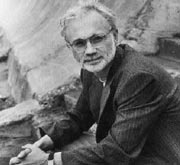‘TIS THE SEASON when Seattle’s choruses and orchestras raise their voices in joyous unison: “All we, like sheep, shall perform Messiah and nothing but.”
Those of you who wish to observe the season with more novel musical experiences may be interested in three just- released recordings of works based on the life of Christ. All these pieces, large-scale works by major composers, explore the question of just how a composer can turn ancient religious texts to fresh and personal use in his or her own time.
John Adams’ El Ni�I> (Nonesuch 79634-2) was intended as a sort of contemporary Messiah. His setting of the birth and childhood of Christ draws from scripture, the Apocrypha, medieval texts, and from contemporary Spanish verse. He scored it for soprano, mezzo-soprano, and baritone soloists (in this recording Dawn Upshaw, Lorraine Hunt Lieberson, and Willard White); three countertenors who sing together as a minichoir; chorus, and orchestra. At the December 2000 premiere performance, at Paris’s Th颴re du Chⴥlet, the work was staged by Peter Sellars as a sort of multimedia liturgical play.
El Ni�I>’s musical links to Messiah are explicit in only a few spots. Like Handel, Adams sets God’s words “I will shake the heavens, and the earth, and the sea, and the dry land” as an agitated showpiece for the male soloist; Adams’ thunderous, convulsive music for this aria is one of his score’s most imposing passages. Later, sparkling broken-chord string figuration representing the appearance of the star recalls Handel’s similar orchestral treatment in the recitative in which the angel announces Jesus’ birth to the shepherds.
Adams’ compositional priority in El Ni�I> was direct and uncluttered text-setting; his music is generally more complex in orchestral texture and color rather than in its harmony or in the melodic shape of the vocal lines. Music of this scope and panache shows up the inadequacy of the term “minimalist,” usually used to describe Adams’ style, but the strong pulse and embrace of consonance associated with the term are present throughout. A few funkier bits, less opulent in texture, are rooted in the urban-pop sound Adams used in his musical I Was Looking at the Ceiling and Then I Saw the Sky.
Two other recordings come from an extraordinary commissioning project sponsored in 2000 by the International Bachakademie Stuttgart. To mark the 250th anniversary of Bach’s death, four composers—including Osvaldo Golijov and Sofia Gubaidulina—were asked for contemporary reinterpretations of the Passion, a form that inspired some of Bach’s most powerful music.
Golijov is best known for exploring his Jewish roots in the stunning Dreams and Prayers of Isaac the Blind for clarinet quintet, but in St. Mark Passion (Hanssler Classic CD 98.404), he draws mainly on the music he heard growing up in Argentina. Loaded with Latin percussion, guitars, and raucous “untrained” choral singing (even the rhythmic stamping of flamenco and Capoeira dancers becomes part of the piece’s sound world), the music’s percolating beat adds a powerful drive to dramatic scenes like Judas’ betrayal, Jesus’ arrest, and the Crucifixion. With passages such as these, Golijov contrasts moments of breathtaking serenity, like “Lua descolorida,” the “Aria of Peter’s Tears,” with its soprano line floating freely like birdsong over slowly treading, near-static strings. Jesus’ death is followed by a rapturous setting of the Kaddish; in the work’s transcendent final minutes, Golijov brings together the traditions of his own heritage and of his adopted homeland.
A much more somber affair is Gubaidulina’s St. John Passion (Hanssler Classic CD 98.405). Most of the narration is taken by a bass (Genady Bezzubenkov) singing chantlike lines at the bottom of his range, or by a keening tenor (Viktor Lutsiuk); bleak solo strings, snarling brass, and the clang of heavy bells are common colors throughout. Gubaidulina intersperses John’s text with visions of the Last Judgment from the Book of Revelation—one narrative arc taking place on earth, one in heaven. The two arcs cross in the movement “The Way to Golgotha,” as Christ’s death march is overlaid with descriptions of six of the seven angels sounding their trumpets, building a staggering tension; right after Christ’s last words, the seventh trumpet sounds and the music explodes into maniacal color.







